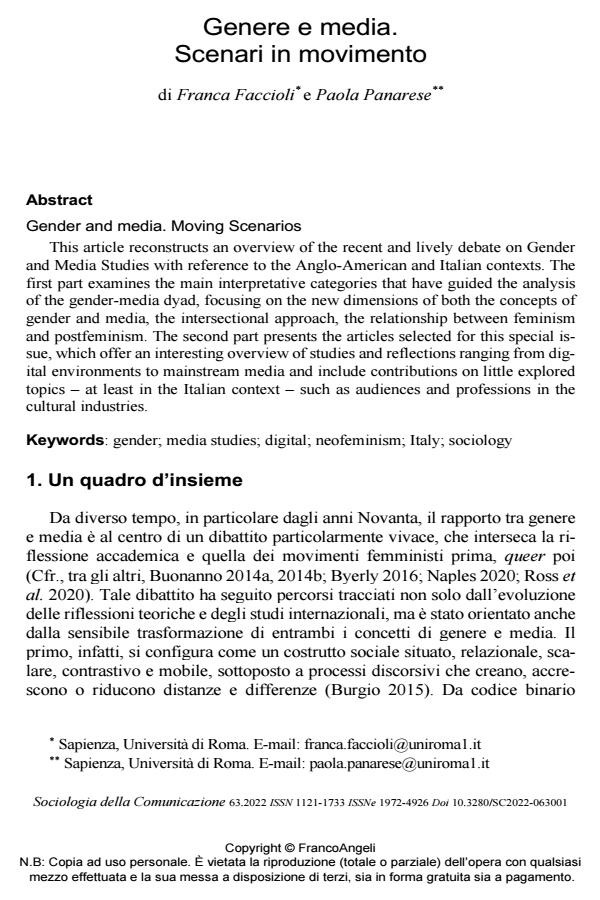Gender and media. Moving Scenarios
Journal title SOCIOLOGIA DELLA COMUNICAZIONE
Author/s Franca Faccioli, Paola Panarese
Publishing Year 2022 Issue 2022/63
Language Italian Pages 22 P. 5-26 File size 349 KB
DOI 10.3280/SC2022-063001
DOI is like a bar code for intellectual property: to have more infomation
click here

FrancoAngeli is member of Publishers International Linking Association, Inc (PILA), a not-for-profit association which run the CrossRef service enabling links to and from online scholarly content.
This article reconstructs an overview of the recent and lively debate on Gender and Media Studies with reference to the Anglo-American and Italian contexts. The first part examines the main interpretative categories that have guided the analysis of the gender-media dyad, focusing on the new dimensions of both the concepts of gender and media, the intersectional approach, the relationship between femi-nism and postfeminism. The second part presents the articles selected for this spe-cial issue, which offer an interesting overview of studies and reflections ranging from digital environments to mainstream media and include contributions on little explored topics - at least in the Italian context - such as audiences and profes-sions in the cultural industries.
Keywords: gender; media studies; digital; neofeminism; Italy; sociology
- The Sociology of Gender in Italy: From Marginal to Mainstream Mariella Nocenzi, Isabella Crespi, in The American Sociologist /2024
DOI: 10.1007/s12108-024-09629-z
Franca Faccioli, Paola Panarese, Genere e media. Scenari in movimento in "SOCIOLOGIA DELLA COMUNICAZIONE " 63/2022, pp 5-26, DOI: 10.3280/SC2022-063001